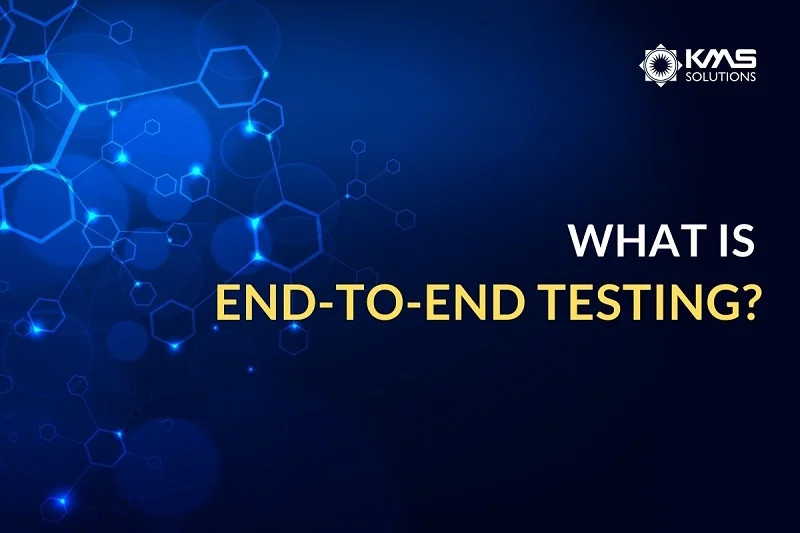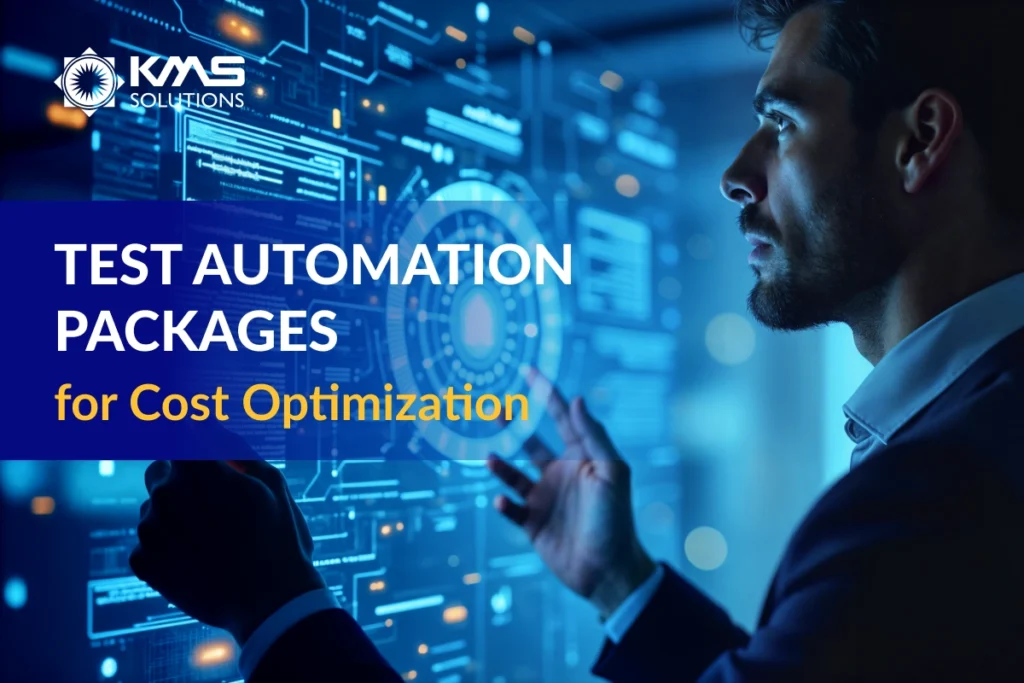Product quality is the vital element that guarantees the success of any software solution. No business would launch a digital product without testing it. And there are many methods of enterprise software testing. Among those, the end-to-end testing approach is rising in popularity.
In today’s blog, we’ll explore the concept of end-to-end testing and how it fits into an overall testing strategy that benefits every company. Despite being the most time and resource-intensive process, it may be the most crucial one.
What is End-to-End Testing?
End-to-End testing (E2E) is a method that tests the entire software product, from start to finish, to ensure the application runs and performs optimally under real-world conditions.
In end-to-end testing, testers simulate real user scenarios by testing the entire application flow, including all software stack layers, like the UI, application logic, data storage, and network connectivity. The goal is to identify potential issues or defects arising from the interactions between these components.
Current enterprise software systems are intricately integrated with many subsystems. When one fails, so does the entire software system. End-to-end testing can help you avoid this significant risk.
E2E testing appeals to a multi-disciplinary group:
- Developers benefit from it as most of the testing is offloaded to the QA team, freeing them up to concentrate on adding sophisticated features to the product.
- Testers find it easier to write end-to-end tests as they’re based on the user’s behaviour, which can be observed during usability testing and recorded in tickets.
- Managers enjoy E2E testing because it allows them to identify the importance of a workflow to real-world users and prioritise tasks in the development backlog.
End-to-End testing in Enterprise Software Testing Strategy
Why is End-to-End testing essential?
Software products can and should be tested on many levels. At the most fundamental level, we have unit tests in which developers write small routines to test the functionality of individual code units. All these routines are combined to form the application. This is helpful for programmers to have immediate feedback on whether they’re implementing features correctly.
Although it’s necessary to ensure that all the individual parts of a software system work properly, this alone doesn’t guarantee that they will function correctly when used together. This is when integration testing comes in. In this testing, two or more components are employed together, and the result is verified.
However, if you have a UI and wonder whether your UI is structured correctly or delivers a pleasant experience, you will have to opt for end-to-end testing, as unit and integration tests don’t cover the UI.
Additionally, modern software systems have many components and dependencies, such as servers, configuration settings, and external resources, which can all affect the application’s behaviour. Testing separate components may not detect all these issues.
This doesn’t mean that unit and integration tests are not important. Along with end-to-end tests, they play a massive role in an overall testing strategy.
Benefits of End-to-End testing
With that being said, end-to-end testing provides several benefits to dedicated software development teams, including:
- Improved quality: end-to-end testing validates that your product is functional at every level, from the front to back-end, on multiple systems and offers insight into its performance across various environments.
- Increase test coverage: by including the many different subsystems in your testing process, you can achieve more test coverage and generate additional test cases that have not previously been considered.
- Detecting bugs: software is typically tested after each iteration using end-to-end testing, making it easier to identify and address any problems. This will decrease the chances of bugs making it further into the testing process (and production), assuring the smooth operation of the application workflows.
- Decrease testing efforts & costs: with fewer breakdowns, bugs and thorough testing at every step, E2E testing allows you to reduce your need to repeat tests and, subsequently, the costs and time involved with doing so.
End-to-end testing lifecycle
An E2E testing life cycle typically comprises four key components:
- Test planning: defines the objective, scope, and requirements of the end-to-end testing process. Development teams also identify the various components of the system, the user scenarios to be tested, and the end-to-end tools and frameworks to use.
- Test design: generates test cases, defines the test scenarios and data sets, as well as the expected results and success criteria for each test case. Risk and usage analysis are also conducted in this phase.
- Test execution: runs test cases in a controlled environment and records the results
- Results analysis: evaluates test results, tracks and manages defects found during testing, and performs additional testing if necessary.
Types of End-to-end testing
1. Horizontal Test
For horizontal testing, development teams aim to verify each workflow through each application from start to finish from the user’s perspective. This ensures each process occurs correctly and a user can navigate a system seamlessly. Tests could be done in a single application/interface/interaction with an external application or third-party vendors. You would also need your test environments for all of your system pieces set up in advance.
For instance, horizontal end-to-end testing for an e-commerce web app includes a sign-in to an account, use of the search and browse functionality, adding an item to a cart, purchasing it, logging shipping and credit card information, confirming the purchase, and then signing out.
2. Vertical Test
Vertical end-to-end testing refers to testing each layer of the application’s architecture from top to bottom. You will have to work through each subsystem to ensure each system component works as expected. Unit tests, UI tests and API tests are included in this method.
How to perform End-to-End testing
E2E testing is generally executed on finished products, making each review a test of the completed system and how it communicates with its components. If the system output doesn’t match expectations or an issue is discovered, a second test will be performed. In this case, the team will have to document and examine the data to ascertain the cause of the problem, after which it is rectified and re-tested.
Before testing, designers and developers will have to create a list of what UI and other functions they need to conduct. It’s also critical to track the data flow between systems to spot dependencies, errors or inaccuracies. Furthermore, conditions should be prepared, covering elements that could change interface options like latency or traffic.
Conclusion
Overall, end-to-end testing can help you validate your entire application from start to finish. There are two types of E2E testing: vertical and horizontal – both are important for ensuring the quality and reliability of software systems.
E2E testing can bring various benefits to enterprises, such as enhanced product quality, expanded test coverage, and increased productivity. Many companies have also incorporated automated end-to-end testing to boost efficiency and reduce time-to-market.
KMS Solutions has helped numerous companies across industries integrate Katalon – an AI-augmented quality management platform to make their E2E tests less complicated. The platform is equipped with advanced capabilities and extensive integrations with top tools, ensuring a seamless fit into your particular quality and DevOps architecture. Our experts can greatly assist you if you seek a powerful automation testing tool or need consultation on developing an effective test strategy.










